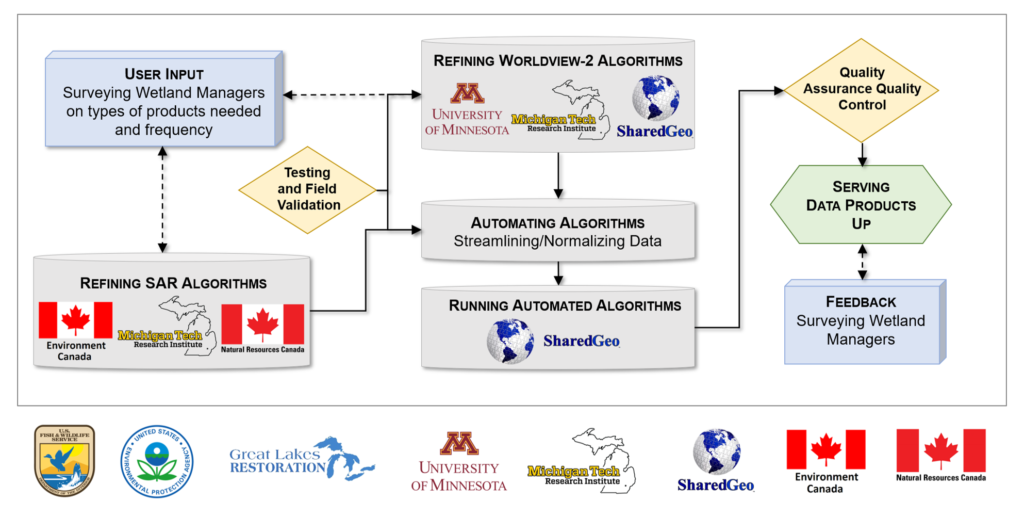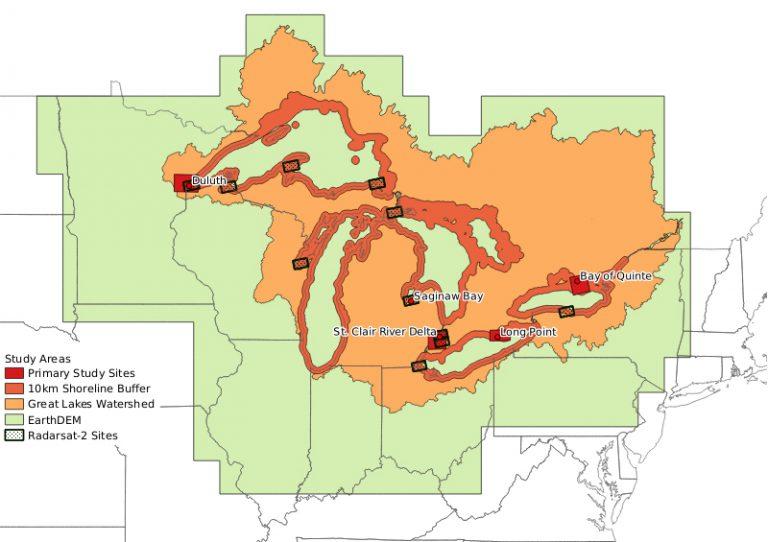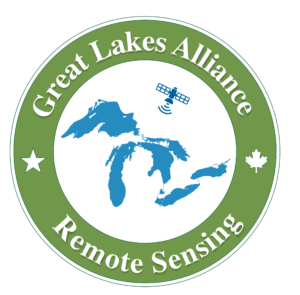Creating, collaborating and sharing geospatial data across the Great Lakes Basin is a challenge due to the fractured and limited remote sensing capabilities of the public and private entities operating in this international setting. To overcome this limitation, in 2016 the U.S. Environmental Protection Agency (EPA) and U.S. Fish and Wildlife Service (USFWS) began funding a collaboration between Michigan Tech Research Institute (MTRI), Polar Geospatial Center, the UMN Remote Sensing and Geospatial Analysis Lab (RSGAL) and SharedGeo to develop and test the potential for creating imagery products which could be used to remotely monitor changes in the Great Lakes Basin ecosystem. Joining this effort over time have been several Canadian partners and other U.S. academic institutions. This group of organizations working together has adopted the name of Great Lakes Alliance for Remote Sensing (GLARS).
The near-term goal of the GLARS effort is to build an integrated, ongoing, remote sensing program for basin-wide mapping, monitoring, management and protection of Great Lakes coastal wetlands. The effort has focused on developing accurate elevation measurement of coastal wetland features and water level changes across time using two main data sources with frequent collection dates: submeter optical satellite imagery from the NextView program and RADARSAT-2 satellite imagery.


